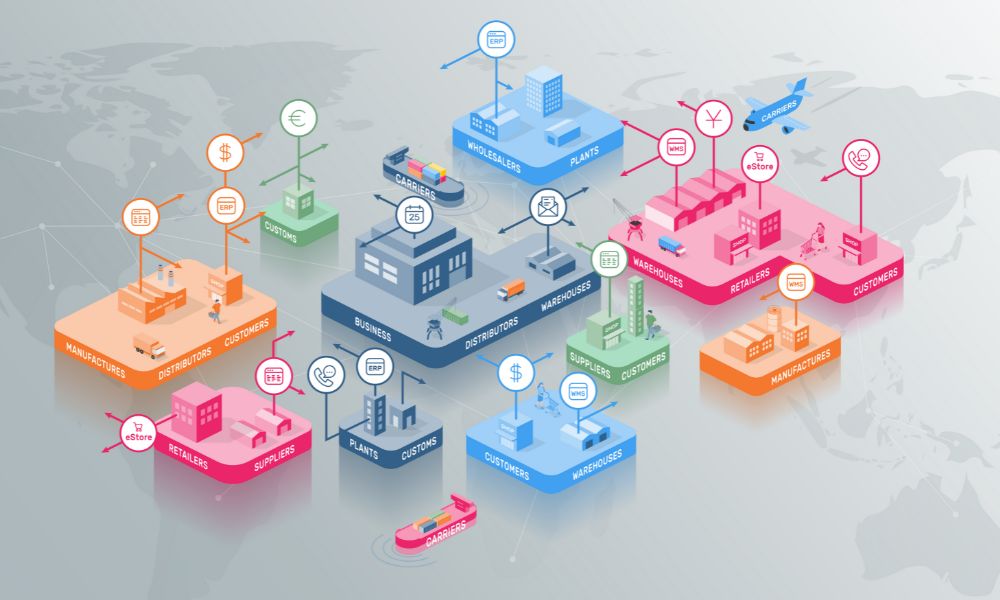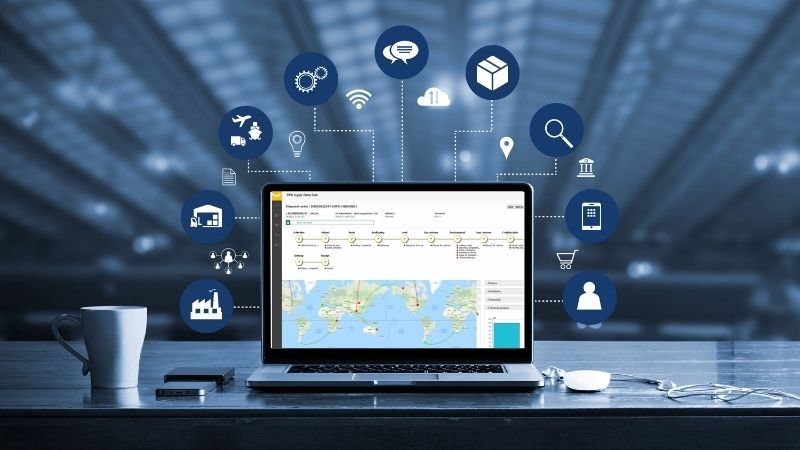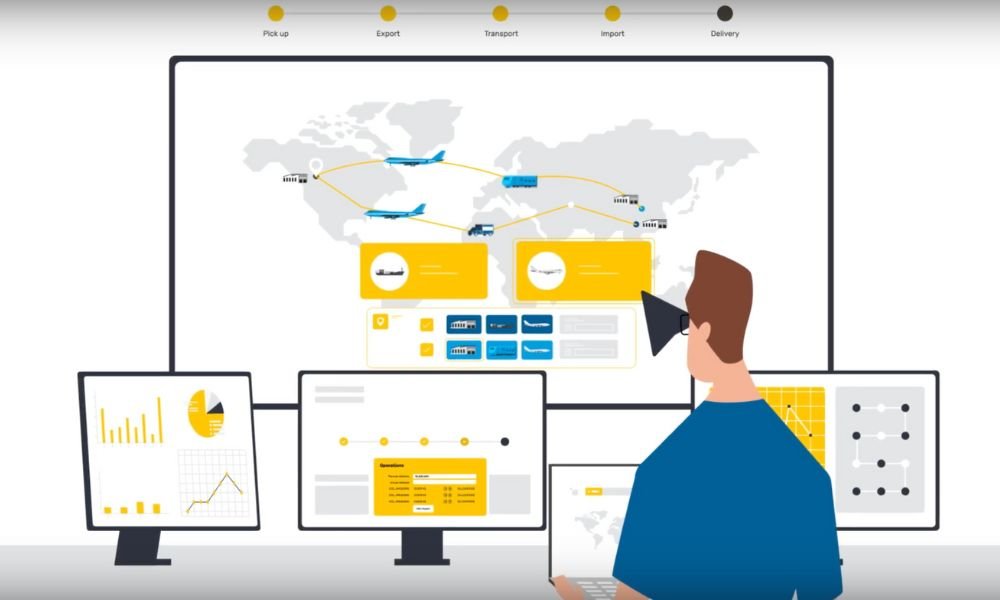
In the last few years, supply chain disruptions have become more rampant. Today’s gridlock – from geopolitical tensions to increased consumer demand amid material and labor shortages and rising inflation – can be challenging to navigate for even the most advanced, digital supply chains, let alone those with limited visibility and digitization.
While supply chain leaders see technology as a competitive advantage, half of organizations don’t have a roadmap in place to implement it. Many are focusing on the short-term needs of reducing costs and increasing efficiency. While this is necessary, supply chain technology strategies often focus on narrow sectors and solutions, making investments less than ideal for a long-term digital transformation.
Driving Supply Chain Excellence Through Intelligent Visibility
In the past decades, manufacturers have become increasingly reliant on service providers to run their supply chains. These partnerships offer incredible advantages, but working with multiple enterprises also inevitably introduces risks, such as transport delays, limited visibility, and many interdependencies. The lack of supply chain visibility has caused many manufacturers to adopt a reactionary approach at every point of the supply chain – from managing inventory levels to meeting delivery times.
So, what can be done?

Addressing Wide-Ranging Priorities Begins With Visibility
A good visibility solution for both immediate pain points and future-focused resilience should span the supply chain end-to-end. Supply chain platforms that can integrate with any system, including proprietary ones, enables manufacturers to get real-time visibility into their own facilities, their multi-tier network of suppliers’ facilities, as well as all warehouse and transport activities during order execution. Having visibility over every movement – from order allocation to logistics processes, such as warehouse operations, customs management, handling, and transportation across all modes through to last-mile delivery – improves efficiency, partner collaboration, costs, and service levels.

Applying Automation & Intelligence
Supply chain visibility is only as good as what you can do with it – and how fast. Visibility backed by embedded intelligence and automation helps manufacturers streamline and optimize order planning and execution processes. Supply chain platforms, for instance, can leverage data to support an organizations’ “just-in-time” inventory approach. Teams set tolerances based on anticipated orders and client buying cycles, receive notifications if inventory is low, and automate timely replenishment.
On the execution side, manufacturers can consolidate shipments and intelligently manage exceptions to increase productivity, service levels, and OTIF delivery. Automation and smart business rules can also be used to optimize reverse supply chains, which often have separate channels. And with a dynamic replenishment plan for manufacturing parts, it’s easier to calculate and maintain the optimal inventory level.
Holistic supply chain software helps manufacturers better utilize their resources, enable smart and proactive event management, and minimize inefficiencies and cost leaks within a volitile environment. With flexibility to prioritize around inventory, orders, logistics, or returns management, manufacturers benefit from solving immediate pain points anywhere in the order lifecycle, while agilely growing and implementing long-term resilience.
An Eye on the Long Game
The core benefit of adopting a holistic digitization strategy is breaking down silos within an organization’s systems architecture and across partner networks. One central platform for insight into the entire order journey: all legs, transport modes, processes, and parties. Exhaustive documentation into an order’s every movement through the supply chain – whether inbound or outbound – for a full cost-to-serve picture beyond logistics. And the ability to immediately and intelligently act on these insights.
Central platforms lay the critical groundwork for continued growth and expansion. The Internet-of-Things (IoT) is helping to streamline data sharing and communication as more devices, vehicles, and appliances connect to the Internet. Central platforms that are sensor-agnostic help businesses make better data-driven decisions by connecting to the IoT through APIs and make smart use of large amounts of data for improved, actionable visibility.
Artificial intelligence and Machine Learning drive advanced analytics for risk assessment and proactive strategies. Gartner predicts that half of supply chain organizations will have invested in AI and advanced analytics by 2024. But the impact of these technologies will be limited if applied to individual sectors and silos. Every area of the supply chain impacts the other, so manufacturers with their eye on the long game will first unify their systems landscape on centralizing platforms to maximize their ROI on such investments.
Customers and governments also have higher expectations around sustainability initiatives from the manufacturing industry. Embedding sustainability as a key metric will become necessary as companies are required to efficiently meet their CSR goals in the coming years. Holistic, unified platforms support green initiatives from planning and executing orders against the lowest carbon footprint to better managing returns and controlled recycling.
Balancing a long-term strategy while solving immediate pain points is easier than ever before. In today’s volatile global market, manufacturing industry executives are quickly recognizing the value of a digital-first strategy to achieve agility and lasting supply chain resilience. Today’s supply chain platforms offer agile implementation so executives can scale their transformation initiatives and lay the critical groundwork for continuous growth.
The MPO global cloud platform for Multi Party Orchestration provides organizations a single-view platform across the entire order lifecycle, unifying all systems, people, and processes network-wide. Curious to learn more about how manufacturers can simultaneously solve their immediate pain points while also building agility and resilience? Download our playbook today. You can also contact us at info@mpo.com, sales@mpo.com, or request a demo today.
- Bitcoin
- blockchain
- blockchain compliance
- blockchain conference
- coinbase
- coingenius
- Consensus
- crypto conference
- crypto mining
- cryptocurrency
- decentralized
- DeFi
- Digital Assets
- ethereum
- machine learning
- manufacturing industry
- MPO Blog
- non fungible token
- plato
- plato ai
- Plato Data Intelligence
- Platoblockchain
- PlatoData
- platogaming
- Polygon
- proof of stake
- Supply Chain Complexity
- supply chain management
- Supply Chain Visibility
- W3
- zephyrnet














